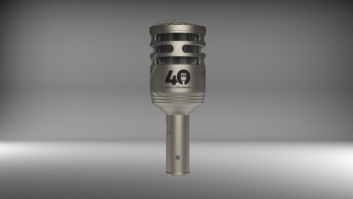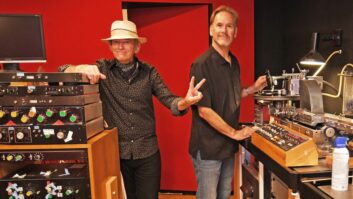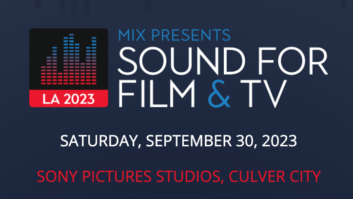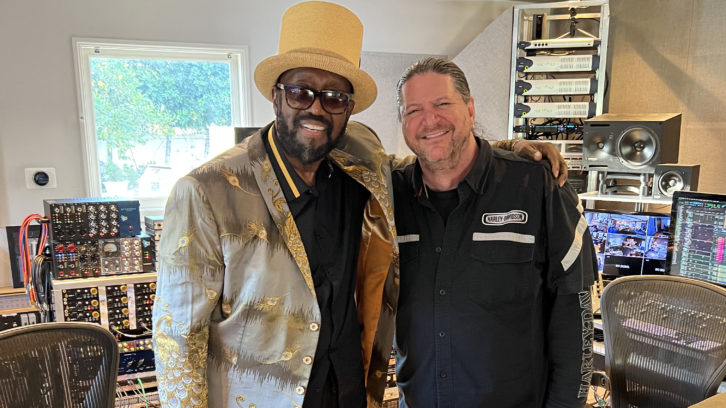
It began with a phone call, Scott Frankfurt recalls: “Hello, I noticed that you’re a studio and you’re in Woodland Hills.” Next thing he knew, he was recording and mixing a 60th anniversary album with The Temptations—featuring a guest appearance by Smokey Robinson—at his homebased studio, all while upgrading his room for Dolby Atmos work.
“I can’t believe how the phone rings and then these people are in the house,” Frankfurt says. “I just pinch myself.”
Not that he usually gets starstruck. Heck, he’s hosted the likes of Sergio Mendes, John Legend, Common, members of Earth Wind & Fire, the Kardashians and the Laboriel family at L.A.-based Scott Frankfurt Studio, which he runs with his wife, Sharon. But here he was, welcoming Smokey Robinson, who penned The Temptations’ very first U.S. No. 1 hit, 1964’s “My Girl,” and Otis Williams, the group’s sole surviving founding member, into his home.
For the Temptations 60 album’s lead single, “Is It Gonna Be Yes Or No,” a new song by Robinson, Frankfurt arrayed the group’s five current singers— Ron Tyson, Terry Weeks, Willie Green and newest member Tony Grant, plus Williams—around the tracking space. “We had Dave Garfield on keys, ‘Ready’ Freddy Washington on bass and Steve Ferrone on drums,” he reports. “It was like I was transported all those years ago to when they were in the Snake Pit,” as the main studio at Motown in Detroit was known.
Frankfurt is a big fan of the Blue Bottle vocal mic, but he only had one, so he called Kevin Walt, the company’s head of artist relations. “That was the sound I had in my head, so we had a Blue Bottle for every one of the Tempts,” he says. “I’m also a fan of the inexpensive but very good-sounding [FMR Audio] RNC compressor, so my signal chain was the same for each guy. Then I had my [Neumann] U 47 on Smokey, so that on his song, he would have a lead vocal presence around the band.”
Like the old Motown days, everyone was rehearsed and on top of their game. “There was none of this endless overdubbing and fixes,” he says. “The first take was basically it, then the second take maybe had a little something, so we comped them, and 70 percent of the live vocal was the record.”
After playing Robinson his mix a few times, he says, “Smokey asked me for a fade and to change one little thing, then he put his hand on my shoulder and said, ‘That’s the record.’ It was old-school production.”
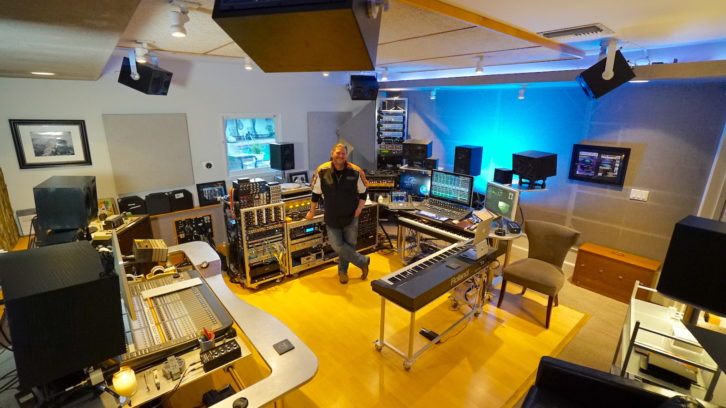
Originally brought on to mix one or two songs, Frankfurt ended up mixing 10 of the album’s 12 tracks, all originals, with Dave Darling and Narada Michael Walden mixing the other two, in one case with engineer Jim Reitzel, for release at the end of January 2022. As the production progressed, he says, UMG’s VP of A&R, Harry Weinger, came to rely on him to bring continuity across the project.
“It was a heavy cast of characters,” he says, with T.C. Campbell, Ron Tyson, Dennis Nelson and K. Sparks, in addition to Robinson, Williams, Walden and Darling, all involved in the production. “It made it incredibly fun to record with all these different producers and all their different workflows,” he says. “I just loved having that front row seat.”
Then, in November 2021, Weinger asked Frankfurt if he could mix everything in Dolby Atmos. “He said, ‘Can you provide an ADM?’ I didn’t know what that was at the time. I said, ‘I would love to do it; I’ll pull it together,’” the engineer says.
“By December, I was going to Atmos university so to speak,” says Frankfurt, former VP of design for music software developer Spectrasonics. With guidance from Dolby’s Ceri Thomas and freelance consultant Josue Catalan he soon had an upgrade plan. Already using Genelec 1031A speakers at his stereo mix position, with a pair of Genelec 1032s diametrically opposite at the guest workstation, Frankfurt elected to integrate more 1031s, at the sides and overhead, to create a 7.1.4 system. One Genelec subwoofer now supports LFE, while a second handles bass management.
To enable system alignment, he persuaded Dirk Williams, who designed and built the studio’s custom-milled, aircraft-grade aluminum studio furniture 20 years ago, to come out of retirement and build adjustable mounts for the ceiling speakers. “They’re works of art,” he says.
Frankfurt installed Avid MTRX Studio and DAD units to handle monitor tuning and control. “I’m still using my Avid S3 and Dock and an iPad for fader control and I’m running the Dolby Audio Bridge on my same computer,” he adds.
Classic Track: “Being With You,” Smokey Robinson
Everything was working by January. All he had to do then was learn how to operate his new Atmos setup, he laughs. “I was emailing and calling Steve Genewick at Capitol Studios, asking a million questions. A shoutout to Steve for helping me.”
Frankfurt started with that Smokey Robinson song, in the process developing an immersive mix concept that would work for the entire album. “I’m a Temptations fan,” he states. “I want to hear their harmonies. Where are they in this 360-degree world? Where’s the lead singer?”
The answer was to place the listener at the center of a semicircle of singers. “And the lead vocals are not on the wall at the front, like a stereo mix, but a little closer to you. Once I had that sorted, the rest fell into place.”
“I’ve now come to learn how valuable it is to have the person that mixed the stereo also do the immersive mix, because of the trust with the band,” he adds. “The approval process—that’s one of the biggest hurdles to getting these mixes out into the world.”
Frankfurt has a particular way of approaching a mix. “I do all the vocals and the effects first, before I start processing the drums and the band. Then I bring everything up to my vocal concept.” That way, he says, “I never get to the point where I can’t hear the vocal.”
This being his Dolby Atmos debut, Frankfurt labored day and night to get everything just right. Chris Bellman at Bernie Grundman Mastering provided valuable guidance during the mastering phase, Frankfurt says. One song exceeded the target loudness by 0.3 dB, he also reports, but veteran mastering engineer Kevin Reeves, UMG’s VP studio operations, walked him through how to match the spec without having to adjust the whole album down.
Solving the challenges presented by his first commercial Atmos release was fun, Frankfurt says. But what’s really fun about immersive mixing, he says, “is making a song explode out of the speakers into the hearts and minds of the listener, and doing it in a format where there’s some headroom and some surprises.”

